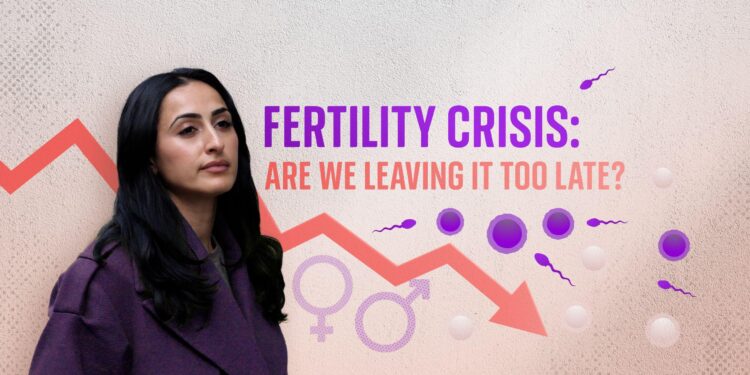As birth rates in the United States continue to decline to historic lows, policymakers and experts are sounding the alarm over a mounting fertility crisis with far-reaching economic and social implications. Once heralded as a demographic advantage, America’s ability to sustain population growth is now in question, raising concerns about workforce shortages, social security strains, and long-term economic vitality. This article examines the root causes behind the nation’s falling fertility rates, explores the challenges faced by families, and evaluates whether current policy proposals offer a plausible path to reversing the trend.
America’s Demographic Decline and Its Economic Consequences
The United States is confronting a demographic shift that could reshape its economic landscape for decades. With fertility rates plummeting to historic lows, the traditional engine of growth—population expansion—is sputtering. Fewer births today translate to a smaller workforce tomorrow, potentially undermining the country’s ability to sustain robust economic activity, fund entitlement programs, and maintain global competitiveness. Analysts warn that this contraction threatens to push the dependency ratio higher, forcing a shrinking base of workers to support a growing elderly population.
Key economic consequences include:
- Labor shortages across critical sectors such as healthcare, manufacturing, and technology
- Reduced consumer demand due to slower population growth
- Increased pressure on Social Security and Medicare systems
- Stagnation in innovation and entrepreneurship linked to demographic vitality
| Impact Area | Short-Term Effect | Long-Term Outlook |
|---|---|---|
| Workforce Size | Modest decline | Significant contraction |
| Consumer Spending | Stable | Downturn due to fewer young consumers |
| Government Spending | Increase on healthcare | Unsustainable levels without reform |
| Innovation | Slowed pace | Decreased global leadership |
Policy Failures and Cultural Shifts Driving the Fertility Drop
Decades of fragmented policy responses have exacerbated the decline in fertility rates across America. The lack of comprehensive family support measures—such as paid parental leave, affordable child care, and flexible work arrangements—has made it increasingly difficult for many to consider parenthood. Instead of facilitating family growth, existing policies often force individuals to choose between career progression and child-rearing. Moreover, medical and reproductive health services remain unevenly accessible, creating disparities that disproportionately impact lower-income and marginalized communities.
Alongside policy shortcomings, profound cultural shifts have transformed how Americans view family and reproduction. The rise of individualism, increased participation of women in the workforce, and evolving gender norms have reshaped priorities, often placing personal growth and economic stability ahead of traditional family planning. These changes manifest in a variety of lifestyle choices, including:
- Delayed marriage and childbearing, with many opting to establish financial security before starting families.
- Greater acceptance of remaining childfree, reflecting changing attitudes toward fulfillment and success.
- Shift toward smaller family units, motivated by economic and environmental concerns.
| Factor | Impact on Fertility Rates |
|---|---|
| Inadequate Parental Leave | Discourages childbearing due to work-family conflict |
| Rising Education Levels | Delays family formation |
| Economic Uncertainty | Inhibits decisions to have multiple children |
| Cultural Emphasis on Individualism | Increases childfree lifestyle choices |
Innovative Family Support Programs and Immigration as Potential Solutions
Addressing America’s declining birth rates demands bold strategies that go beyond traditional policy frameworks. Governments and private sectors alike are exploring innovative family support programs designed to alleviate the economic and social pressures that inhibit childbearing. These include expansive parental leave policies, subsidized childcare, and flexible work arrangements that foster a better work-life balance for young families. Additionally, initiatives such as community-based childcare cooperatives and incentivized fertility treatments have gained traction, aiming to remove barriers that disproportionately affect lower-income households.
Simultaneously, immigration remains a pivotal, yet often underutilized, solution to the fertility crisis. By attracting skilled and unskilled immigrants, the U.S. can effectively boost its population and workforce diversity, offsetting the demographic decline. Recent proposals suggest streamlining visa processes, expanding family reunification programs, and enhancing support services for immigrant families to better integrate them into society. Below is a simplified comparison highlighting how family support programs and immigration contribute to tackling fertility-related challenges:
| Solution | Main Benefit | Key Challenge |
|---|---|---|
| Family Support Programs | Increase birth rates by easing economic burdens | Funding sustainability and equitable access |
| Immigration | Immediate population growth and labor market support | Political resistance and integration hurdles |
- Expanded childcare subsidies: Make child-rearing more affordable.
- Immigration reform proposals: Aim to attract young families and workers.
- Flexible workplace policies: Encourage parents to balance work and family life.
In Summary
As America grapples with a declining birthrate that threatens economic growth and national security, policymakers face difficult choices. Boosting fertility will require coordinated efforts spanning healthcare, family support, and immigration reform—none of which offer quick fixes. Whether the U.S. can successfully reverse its fertility crisis remains uncertain, but the urgency of the challenge ensures it will remain a key issue on the national agenda in the years to come.












When a City’s Rock ‘n’ Roll Dream Collides with Relentless Bureaucracy